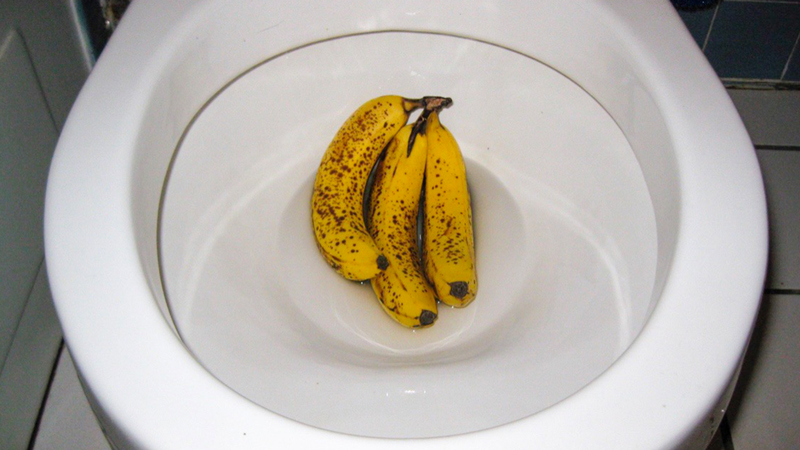Can One to Dispose of Food in the Toilet?
Can One to Dispose of Food in the Toilet?
Blog Article
Nearly everybody seems to have their private assumption about Flushing Food Down the Toilet?.

Introduction
Lots of people are often confronted with the problem of what to do with food waste, specifically when it concerns leftovers or scraps. One usual inquiry that arises is whether it's fine to flush food down the bathroom. In this article, we'll explore the reasons people may think about purging food, the effects of doing so, and different techniques for correct disposal.
Reasons that people could take into consideration purging food
Absence of understanding
Some individuals may not know the prospective damage caused by flushing food down the toilet. They may erroneously believe that it's a safe method.
Ease
Flushing food down the toilet may feel like a fast and very easy solution to getting rid of undesirable scraps, particularly when there's no nearby trash can offered.
Laziness
In many cases, individuals may simply select to flush food out of sheer idleness, without thinking about the repercussions of their actions.
Consequences of flushing food down the commode
Environmental impact
Food waste that ends up in waterways can add to pollution and damage marine ecosystems. Additionally, the water made use of to purge food can stress water sources.
Plumbing issues
Purging food can result in stopped up pipelines and drains pipes, triggering expensive pipes repair services and inconveniences.
Types of food that need to not be purged
Coarse foods
Foods with coarse appearances such as celery or corn husks can get entangled in pipelines and trigger clogs.
Starchy foods
Starchy foods like pasta and rice can soak up water and swell, resulting in clogs in pipes.
Oils and fats
Greasy foods like bacon or food preparation oils must never ever be flushed down the commode as they can strengthen and cause clogs.
Correct disposal methods for food waste
Utilizing a garbage disposal
For homes outfitted with waste disposal unit, food scraps can be ground up and flushed via the plumbing system. Nonetheless, not all foods are suitable for disposal in this way.
Recycling
Certain food packaging products can be reused, decreasing waste and reducing ecological influence.
Composting
Composting is an eco-friendly way to dispose of food waste. Organic materials can be composted and utilized to enhance soil for gardening.
The importance of proper waste management
Reducing environmental injury
Correct waste monitoring practices, such as composting and recycling, help minimize air pollution and preserve natural deposits for future generations.
Protecting plumbing systems
By staying clear of the practice of flushing food down the bathroom, property owners can prevent costly plumbing repairs and preserve the stability of their pipes systems.
Final thought
Finally, while it may be tempting to purge food down the toilet for benefit, it is essential to understand the prospective consequences of this activity. By taking on appropriate waste administration methods and taking care of food waste sensibly, people can add to much healthier pipes systems and a cleaner atmosphere for all.
FLUSH FOOD DOWN THE TOILET?
FLUSHING FOOD CAN CAUSE BLOCKED DRAINS IN YOUR HOME
All of the plumbing fixtures in your home are connected to the same sewer pipe outside of your home. This outdoor sewer pipe is responsible for transporting all the wastewater from your home to the Council sewer mains. Even small pieces of food that go down the kitchen sink can cause problems for your sewer. It should therefore be obvious that flushing larger bits of food, such as meat, risks a clog in either the toilet itself or the sewer pipes. Flushing greasy food is even more problematic because oil coagulates when it cools, coating the interior lining of your pipes.
THE TOILET IS NOT A BIN
Food isn’t the only thing that people shouldn’t be flushing down the toilet. People use the toilet to dispose of all kinds of things such as tampons, makeup wipes, dental floss, kitty litter and even underwear. Water goes to great lengths to educate residents about the high costs and stress placed on wastewater treatment systems simply from people flushing the wrong stuff down the toilet. It costs taxpayers millions of dollars each year, and homeowners thousands in blocked drain repairs.
FLUSHING FOOD IS A WASTE OF WATER
Flushing food is a waste of our most precious resource - water. In June this year Level 1 water restrictions were introduced to protect water supply from drought conditions. Much of New South Wales continues to be affected by prolonged drought with recent figures revealing up to 97 per cent of the state remains in drought. Depending on whether you have a single or dual flush toilet, every single flush uses between five and 11 litres of water. In the current climate this is a huge amount of water to be wasting on flushing food that should be placed in the bin (or better yet, the compost).
https://www.jabplumbingsolutions.com.au/blog/can-you-flush-food-down-the-toilet

We had been made aware of that editorial on Think Twice Before Flushing Food Down Your Toilet through someone on a different web property. If you enjoyed reading our blog entry if you please do not forget to pass it around. Thank you so much for your time invested reading it.
Quote & Schedule Report this page